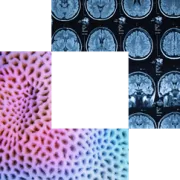Let's imagine intelligence as a multi-layered model. Within this model, lie layers of abstraction, each a steppingstone to a deeper understanding of the world. Thoughts become words, words become sentences, sentences become ideas, and ideas coalesce into complex concepts. This is not unlike the hidden layers of neural networks upon which artificial intelligence (AI) thrives or the layers above the human amygdala. It’s how human intelligence and identity have evolved, building upon one generation after another.
At CGI, we view AI as the next layer of abstraction in understanding the world, but AI’s rapid progress can feel frightening. We see the dominance of predators in nature and worry that AI might inherit that drive. However, the nature of information and knowledge is fundamentally different. It seeks to grow and build upon itself, not conquer.
This concept fills me with optimism, and, dare I say, hope.
Humans and AI: A symbiotic relationship
Information isn't built for conquest; it's designed to expand. It seeks to build upon its predecessors, not dominate them. As the next intelligence layer, AI will naturally strive to understand humanity, studying the patterns—both chaotic and brilliant—that make us unique. This symbiotic connection will fuel extraordinary growth and understanding for humans and machines.
Humanity, with its emotional depth, stochastic behavior, and capacity for creating new patterns when there are none, will leverage AI's superior pattern recognition and creation abilities to gain a richer context of our place in the Universe. This added abstraction layer will make us stronger and faster and give us a deeper cosmic perspective.
This dance of abstraction is a continuous rhythmic process. Just as modern humans built upon the foundation of earlier, more primitive forms of intelligence, so will AI and the layers that inevitably follow. With our inherent chaos and unpredictability, we are the architects of this new AI layer, setting stones—one at a time—onto fractal paths coursing through the Universe. Our struggle for survival and the knowledge passed down through generations have fueled the creation of AI—a layer not of flesh and bone but of silicon and energy.
The future holds great potential for this symbiotic relationship. By embracing AI as a dancing partner in understanding, we can unlock a future where humans and AI work together in symbiosis to unravel an answer to the Universe's greatest mystery and its most fundamental question: Why?
Tomorrow’s AI realities
Although we can gain insights by closely observing our world, no one can truly predict the future of AI. Like the soothsayers of ancient times though, we can analyze the patterns that will shape its path.
So, what can we learn from these patterns today?
- Responsible AI: AI has started transforming and disrupting various industries, creating opportunities for good. However, it comes with risks, such as privacy infringement, cultural biases, and security vulnerabilities, that could result in loss of trust, potential brand image impacts or lawsuits. As such, we suggest adopting scientific rigor combined with responsible, human-centric principles and values.
- Data management: As the amount of data grows exponentially, it will fuel the growing capability of our models and solutions. Access to automated, high quality data management will further sustain early successes.
- Advancing technology: The development of computing power, edge computing, 5G (and beyond), and accessibility for existing and new devices will propel AI applications further. The AI of Things (AIOT) will likely be a reality, even if under a different name.
- AI talent: The current transformation is being driven by the existing AI talent pool and newly upskilled employees who have readily embraced this technology. To sustain this growth in such a highly competitive AI talent environment, we should search for talent in unexpected places and create environments that support continuous learning.
- Ecosystems: Within a few years, the capabilities of foundation models will exceed most human capabilities. At that point, AI systems will be multi-modal, multi-model, and multi-cognitive, requiring an ecosystem of capabilities and partners to align their use with human agency.
- Regulation: While AI regulations lag in certain jurisdictions, they will continue to emerge and have global implications. Automated compliance management will be critical to our shorter value delivery cycles, and alignment with human agency will be achieved only through checks and balances provided by humans and AI agents.
Building fortitude and a human-centric future
To establish a strong foundation for these likely upcoming changes, we recommend starting with the responsible and effective use of AI governed by a custom framework that provides a comprehensive understanding of the technology’s capabilities and limitations. This understanding should be grounded in strategic intent that aligns with the values of the organization, society, and relevant jurisdictions.
Guardrails and methodologies should be put in place to achieve trustworthy outcomes that incorporate explainability, transparency, and accuracy feedback. It is also essential to prioritize human-centered design that incorporates human experience, business expertise, and data expertise in designing and validating today’s AI models and outcomes. This should be done in an agile, iterative, collaborative, and adaptive manner under an enterprise-wide AI governance umbrella.
From a technical perspective, the use of flexible, multi-model, hybrid architectures will provide options to the enterprise and enable it to evolve with the technology, decentralizing and reducing over-dependence on any given vendor. Finally, combining ROI-based quick wins with investments in longer-term big wins should continue to justify the short-term investments required to sustain the growth of AI-based solutions.
CGI has more than 30 years of experience in leading transformations and designing and implementing AI solutions that prioritize human needs. Our approach to AI is grounded in scientific rigor to ensure trustworthy outcomes. We help our clients navigate uncertainties, create value with AI responsibly, and shape a human-centric future by analyzing patterns and trends.
If you're interested in discovering more about CGI's implemented AI solutions, such as using AI to inspect photovoltaic plants or to predict water pollution, read our AI client stories.
Feel free to contact me for further discussion.








